[nextpage title=”Introduction”]
Canon 16-35mm f2.8 II v Leica 19mm f2.8 v Olympus 18mm f3.5
[published may 2007]
I had two questions in mind when preparing this test: first, can the new Mark II Canon 16-35mm f2.8 L cut the mustard where no mustard has previously been cut by Canon? And second, what is the best sub-20mm prime? Both the now-collectible Zuiko 18mm and the pedigree Elmarit 19mm have their fans: the Olympus is praised as an architecture lens par excellence – light, distortion-free and optimised for stopped down work – and of course the Leica is, well, a Leica: outstanding colour fidelity and saturation, and that distinctive high res/gentle contrast trademark look. Between them, they represent a baptism by fire for a new design, but if Canon are to woo back users of adapted lenses, (and restore their somewhat tarnished reputation in this regard) these are the lenses they need to match or outperform.
Naturally, both the Olympus and the Leica are wearing adaptors (adapters for US readers) for this test: FotoDiox’ finest. The Leica 19mm requires a little surgery before it’s ready to mount on a full frame EOS digital: the modification is described in gory detail here . . .
The Zuiko displays all the Olympus hallmarks of having been engineered from first principles from the ground up, without reference to extant designs: eleven elements in nine groups crammed into a lens less than 50mm in length, even with the essential 49-72mm combined filter ring adaptor / hood. The minimum focus is 25cm. At the time of writing there are no known problems using the lens on the Canon 5D, 1Ds series cameras or EF-S mount bodies: the small fin projecting beyond the tiny 12mm rear element is far enough inboard not to foul the mirror. The sample tested here is numbered 105953.
The Leica 19mm Elmarit tested here (sample 3796179) is the latest ROM-equipped model modified for use on Canon bodies. Weighing in at a whopping 600g (about twice the weight of the Olympus 18mm) it’s a substantial piece of work, beautifully machined and reassuringly smooth in operation. The minimum focus is 30cm. If you’re feeling finicky you might want to hack the outer corners of the unique rectangular lens hood to ease the vignetting. All the following tests were conducted without the hood.
Sometimes Canon sticks a Mark II label on something and it means nothing: think of the Canon 200mm f1.8, or the f2.8, or the 18-55mm. Then again, sometimes underneath the unassuming label is an entirely different animal: here think of the 1Ds. The Canon 16-35mm f2.8 L Mark II falls into the latter category: it’s a complete redesign of the original 16-35, the most obvious external sign of which is the enlarged front element and 82mm filter ring. There are two more elements in the new design (16 rather than 14), making it longer (114mm rather than 103mm) and heavier (635g rather than 600g) than the Mark I. The MTF charts indicate that the aim of these changes was to improve the wide end performance rather than the already pretty fine long end:
Rollover each image to overlay the Mark II MTF chart.
Apparently the new lens will go some way towards matching the superior performance of the much cheaper 17-40mm in the 17-20mm range. But how will it compare with state of the art primes? Is Canon finally vindicated in its decision to arrest development of wide L primes in favour of the convenience of zooms? Let’s find out . . . .
[nextpage title=”Resolution (f2.8)”]
Performance at f2.8 (Zone A)
 |
 |
 |
| Olympus 18mm f3.5 at f3.5 (centre) | Leica 19mm at f2.8 (centre) | Canon 16-35mm f2.8 II at 18mm f2.8 (centre) |
|
4.3 points
|
4.8 points
|
4.8 points
|
As the MTF charts and previous testing of the Canon 16-35mm f2.8 Mark I confirm, the flagship Canon ultrawide zoom is razor sharp centre frame at all apertures: even wide open. Though the Leica 19mm capture appears to be inferior at first glance, close examination confirms that, though its accutance is compromised at this aperture, it fractionally out-resolves the Canon. Notice, too, that right from the off, the Leica has beautiful colour rendition. As expected, wide aperture performance is not the Zuiko’s forté.
Performance at f2.8 (Zone B: Right Side)
 |
 |
 |
| Olympus 18mm f3.5 at f3.5 (centre) | Leica 19mm at f2.8 (centre) | Canon 16-35mm f2.8 II at 18mm f2.8 (centre) |
|
3.9 points
|
4.3 points
|
4.8 points
|
Moving out across the image circle, the Mark II Canon 16-35 images outstandingly well, maintaining the excellence of its centre frame performance right the way out to 18mm from the centre, as promised by the MTF charts. Here it looks much more attractive even than the Leica 19mm. However, look out for the expected dip as we move into Zone C . . .
Performance at f2.8 (Zone C: Upper Left Corner)
 |
 |
 |
| Olympus 18mm f3.5 at f3.5 (centre) | Leica 19mm at f2.8 (centre) | Canon 16-35mm f2.8 II at 18mm f2.8 (centre) |
|
3.9 points
|
4 points
|
3.7 points
|
This set of crops is particularly revealing: in the Canon 16-35’s favour, I’ve never seen a lens this wide deliver such an outstanding lack of vignetting wide open. However, this is such an easy post-production fix we shouldn’t get misty-eyed about it when the resolution is so poor. Note, too, that none of these lenses suffer badly from CA which is somewhat evident with the Olympus and the Canon at the window frame. Here we see the waveform distortion problem that affects the Olympus and (to a greater degree) the Leica 19mm. Unusually, the Canon 16-35mm II proves to be near-perfect for geometry at 18mm.
[nextpage title=”Resolution (f4)”]
Performance at f4 (Zone A)
 |
 |
 |
| Olympus 18mm f3.5 at f3.5 (centre) | Leica 19mm at f4 (centre) | Canon 16-35mm f2.8 II at 18mm f4 (centre) |
|
4.3 points
|
4.9 points
|
4.9 points
|
The half-stop penalty suffered by the Olympus catches up with it here as the other contenders step up their game one stop down. Again, both the Leica 19mm and the Canon 16-35mm are superb: the Elmarit resolves more information and sees deeper into the shadows; the Mark II zoom benefits from stronger macro-contrast.
Performance at f4 (Zone B: Right Side)
 |
 |
 |
| Olympus 18mm f3.5 at f4 (mid-frame) | Leica 19mm at f4 (mid-frame) | Canon 16-35mm f2.8 II / 18mm f4 (mid-frame) |
|
3.9 points
|
4.8 points
|
4.9 points
|
However fine the Leica is at f4, the Canon is just a little better in Zone B, though it can’t match the Leica for colour, frequently looking a little jaundiced by comparison.
Performance at f4 (Zone C: Upper Left Corner)
 |
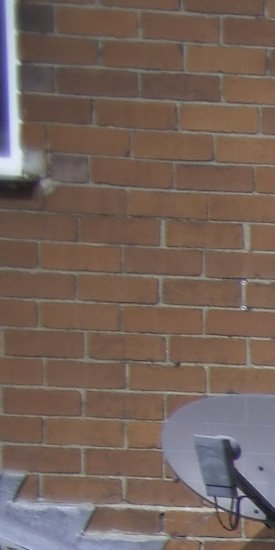 |
 |
| Olympus 18mm f3.5 at f3.5 (corner) | Leica 19mm at f4 (corner) | Canon 16-35mm f2.8 II at 18mm f4 (corner) |
|
4.0 points
|
4.1 points
|
3.8 points
|
The Leica 19mm isn’t entirely vignette-free one stop down but it does resolve strongly in the outer image circle – not as well as, for instance, the Contax N 17-35mm in the 17-19mm range, but well enough. The Canon 16-35mm is still off the pace. Amid the fog, the Zuiko (wide open) is seeing more of the corner than the Canon L at f4.
[nextpage title=”Reslution (f5.6)”]
Performance at f5.6 (Zone A)
 |
 |
 |
| Olympus 18mm f3.5 at f5.6 (centre) | Leica 19mm at f5.6 (centre) | Canon 16-35mm f2.8 II at 18mm f5.6 (centre) |
|
4.6 points
|
4.9 points
|
4.9 points
|
The Leica clearly merits a higher score for Magic & Sparkle, but in ‘sharpness’ terms, it’s too close to call here: both the Elmarit and the Canon zoom are wiry. We’ll not see the best of the Olympus for another stop yet.
Performance at f5.6 (Left Side)
 |
 |
 |
| Olympus 18mm f3.5 at f5.6 (mid-frame) | Leica 19mm at f5.6 (mid-frame) | Canon 16-35mm f2.8 II / 18mm f5.6 (mid-frame) |
|
4.0 points
|
4.9 points
|
4.9 points
|
Focus on the grass and the Canon looks more attractive; look at the horizontal ridges in the plasterwork and the Leica shines. It really is a horses for courses thing.
Performance at f5.6 (Zone C: Upper Left Corner)
 |
 |
 |
| Olympus 18mm f3.5 at f5.6 (corner) | Leica 19mm at f5.6 (corner) | Canon 16-35mm f2.8 II at 18mm f5.6 (corner) |
|
4.1 points
|
4.2 points
|
3.9 points
|
By f5.6 the Leica 19mm is well on the way to turning in a useable corne. The Canon 16-35mm needs at least another stops to arrive here and the Olympus won’t hit its stride until f11 . . .
[nextpage title=”Resolution (f8)”]
Performance at f8 (Zone A)
 |
 |
 |
| Olympus 18mm f3.5 at f8 (centre) | Leica 19mm at f8 (centre) | Canon 16-35mm f2.8 II at 18mm f8 (centre) |
|
4.4 points
|
4.9 points
|
4.8 points
|
From hereon up we see the same phenomenon at work that was first shown in Mike Hatam’s Olympus v Zeiss 18mm test: reversing the usual pattern, the Zuiko is relatively sharper at the outer edge of its image circle than in its centre. For centre frame performance the Canon 16-35mm peaks at f5.6 and is just fractionally less attractive than the Leica 19mm at f8. The Elmarit is a delight here.
Performance at f2.8 (Zone B: Upper Right Side)
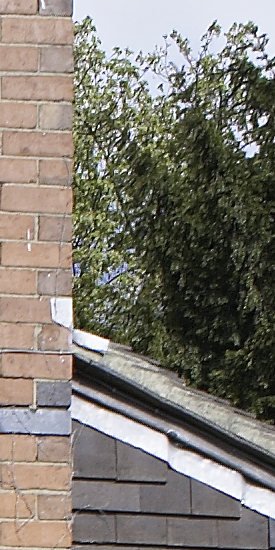 |
 |
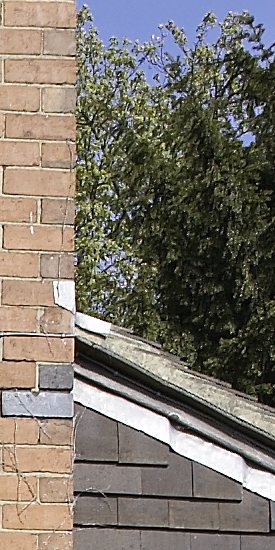 |
| Olympus 18mm f3.5 at f8 (mid-frame) | Leica 19mm at f8 (mid-frame) | Canon 16-35mm f2.8 II / 18mm f8 (mid-frame) |
|
4.3 points
|
4.9 points
|
4.8 points
|
Note how richly the Leica’s colours are rendered. This goes a long way toward the more three-dimensional presentation of the prime which for the first time is pulling away from the Canon L zoom.
Performance at f8 (Zone C: Upper Right Corner)
 |
 |
 |
| Olympus 18mm f3.5 at f8 (corner) | Leica 19mm at f8 (corner) | Canon 16-35mm f2.8 II at 18mm f8 (corner) |
|
4.2 points
|
4.5 points
|
4.3 points
|
The Leica too suffers from a relatively sudden drop off in corner performance affecting the last hundred or so pixels. Were it not for that, it would have scored higher. The Canon and Olympus are on a long, slow journey to acceptable corner performance, and they’re not there yet. Again, gob-smackingly lovely Leica colour.
[nextpage title=”Resolution (11)”]
Performance at f11 (Zone A)
 |
 |
 |
| Olympus 18mm f3.5 at f11 (centre) | Leica 19mm at f11 (centre) | Canon 16-35mm f2.8 II at 18mm f11 (centre) |
|
4.6 points
|
4.9 points
|
4.8 points
|
The Olympus has distinctively soft micro and macro contrast compared to the Leica and Canon. The 19mm f2.8 just about steals it here again, though.
Performance at f11 (Zone B: Left Side)
 |
 |
 |
| Olympus 18mm f3.5 at f11 (mid-frame) | Leica 19mm at f11 (mid-frame) | Canon 16-35mm f2.8 II / 18mm f11 (mid-frame) |
|
4.6 points
|
4.9 points
|
4.8 points
|
We’re seeing a pretty level playing field at f11, but still the Leica shines.
Performance at f11 (Zone C: Lower Right Corner)
 |
 |
 |
| Olympus 18mm f3.5 at f11 (corner) | Leica 19mm at f11 (corner) | Canon 16-35mm f2.8 II at 18mm f11 (corner) |
|
4.3 points
|
4.5 points
|
4.4 points
|
If you can afford to stop down this far, the Canon delivers a fair corner. Apart from the last few pixels, the Leica looks pretty good also. The little Zuiko lags.
[nextpage title=”Resolution (f16)”]
Performance at f16 (Zone A)
 |
 |
 |
| Olympus 18mm f3.5 at f16 (centre) | Leica 19mm at f16 (centre) | Canon 16-35mm f2.8 II at 18mm f16 (centre) |
|
4.6 points
|
4.8 points
|
4.8 points
|
The Olympus responds well to being stopped down this far, but the other lenses in the group are beginning to soften up slightly.
Performance at f16 (Zone B: Foreground, Middle)
 |
 |
 |
| Olympus 18mm f3.5 at f16 (mid-frame) | Leica 19mm at f16 (mid-frame) | Canon 16-35mm f2.8 II / 18mm f16 (mid-frame) |
|
4.7 points
|
4.8 points
|
4.9 points
|
There’s nothing at all wrong with the Canon’s performance in the near-field range: indeed in outperforms both primes when stopped down.
Performance at f16 (Zone C: Upper Right Corner)
 |
 |
 |
| Olympus 18mm f3.5 at f16 (corner) | Leica 19mm at f16 (corner) | Canon 16-35mm f2.8 II at 18mm f16 (corner) |
|
4.4 points
|
4.5 points
|
4.5 points
|
Stopping down brings further benefits for the Canon: almost entirely eliminating CA. Both the Olympus and the Leica are showing traces here against the sky. It’s a shame that we haven’t seen a critically sharp corner from any of these lenses at any aperture; it seems to be the exclusive property of the Zeiss 21mm and Contax N 17-35mm f2.8 to deliver a rating of more than 4.5 in Zone C.
[nextpage title=”Flare & Ghosting”]
A naked point light source was raked across the front element of each lens with the hoods removed. The following examples represent the worst behaviour that could be provoked . . .
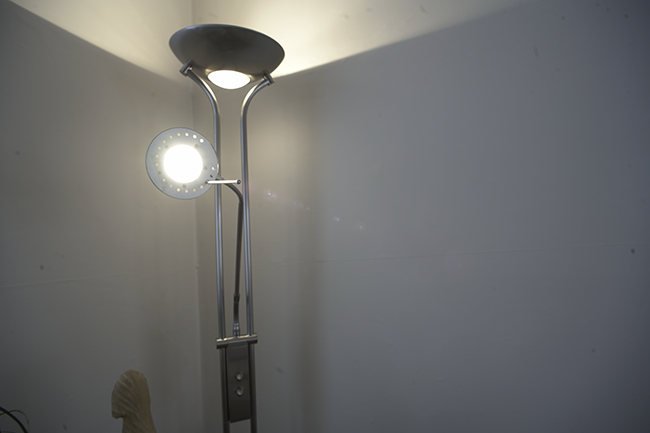 |
| Olympus 18mm f3.5 at f8 (full frame) |
|
7 points
|
Excellent flare control from the Olympus 18mm: only the most modest scattering of internal reflections are visible under these circumstances.
 |
| Leica 19mm Elmarit f2.8 at f8 (full frame) |
|
9 points
|
However, the Leica behaves flawlessly: no ghosts, no matter how hard I tried to induce them, and very well controlled local contast under duress. The only tiny flaw is a ‘big ring’ showing up in Zone C here, bottom right corner.
 |
| Canon 16-35mm f2.8 Mark II at 18mm / f8 (full frame) |
|
9.25 points
|
Perhaps surprisingly, given the size and complexity of the design, the Canon 16-35mm Mark II not only matches the Elmarit for practically ghostless performance (there is a faint internal reflection in Zone B), but it retains contrast even better than the Leica, and (a personal favourite, this), hangs a few rays in place of the prime’s unadorned glow.
Flare handling (100% crops)
 |
 |
 |
| Olympus 18mm f3.5 at f8 (100% crop) | Leica 19mm Elmarit at f8 (100% crop) | Canon 16-35mm f2.8 II at 18mm f8 (100% crop) |
The new Canon 16-35mm shares the superb flare control characteristics of its cheaper stablemate, the 17-40mm f4. In fairness, all three contenders here fare very well and none could be considered unreliable in the field.
[nextpage title=”Distortion”]
No attempt was made to equalise the framing of the Leica 19mm and Olympus 18mm primes in this instance.
 |
| Olympus 18mm f3.5 at f8 (full frame) |
|
10 points
|
The Zuiko 18mm has an excellent reputation for distortion control – users commonly report experience ‘no distortion’ for architectural work. As you see, Zones A and B are fairly neutral for a lens this wide, but there is an observable kink of positive distortion in Zone C.
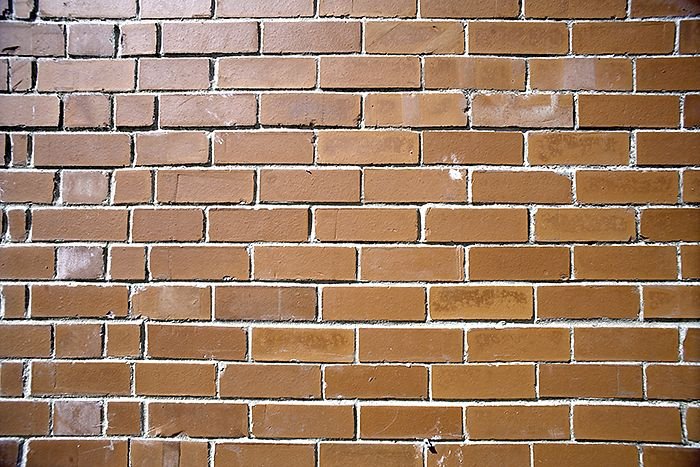 |
| Leica 19mm Elmarit f2.8 at f8 (full frame) |
|
8 points
|
The Leica has a similar patten of distortion to the Olympus but it’s more severe in scale.
 |
| Canon 16-35mm f2.8 Mark II at 18mm / f8 (full frame) |
|
10 points
|
The Canon 16-35mm II behaves like a less unruly version of the Mark I: the barrel distortion is uncomplicated and located only in Zones A and B. A simple Photoshop Spherize (-6%) does the trick without any degradation. In typical ultrawide zoom style, the 16-35 II progresses from barrel distortion at the wide end (at 16mm, it has the exactly same distortion as at 18mm), through to neutral (like the Nikon 17-35mm f2.8, it is dead neutral in the 20-22mm range), and onto pincushion from 24mm up, peaking at 28mm and flattening out somewhat by 35mm . . . like this:
 <
<
Canon 16-35mm f2.8 L at 16mm (full frame)
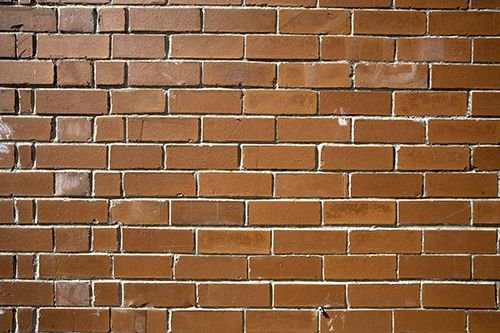
Canon 16-35mm f2.8 L at 20mm

Canon 16-35mm f2.8 L at 24mm<

Canon 16-35mm f2.8 L at 28mm
 <
<
Canon 16-35mm f2.8 L at 35mm
[nextpage title=”Chromatic Aberration”]
The following 150% and 200% crops demonstrate the degree and type of CA evident at f4 (or f3.5) and at f11. As before, the Olympus 18mm is on the left, the Leica 19mm is in the middle, and the Canon 16-35mm II at 18mm is on the right

At wide apertures the Leica is the least affected by CA, but at f11, there’s little to choose between it and the Canon 16-35mm. Again, this represents a big improvement over the Mark I.

The Olympus’ lateral CA is of the same blue/yellow flavour as the 19mm Elmarit, but the fringing is a few pixels wider. Interestingly, the Canon L reverses the wide aperture performance to put in a respectable showing at f11. It exhibits a relatively well defined, narrow fringe of red/green CA.
[nextpage title=”Conclusion”]
It’s immediately evident that some major changes have been made under the skin to turn the Mark I, a relatively mediocre performer among state-of-the-art wide angles, into the Mark II – a lens that bears comparison with the finest available.
By any measure, the 16-35mm II easily outperformed the Olympus 18mm tested, and at wide apertures, the Canon L is more attractive across the majority of the frame than even the Leica.
Most tests (and Canon’s MTF charts) indicate that the Mark I 16-35mm is not as good in the 17-20mm range as the cheaper f4 L. Informal testing conducted as a postscript to this review confirms that the Mark II finally justifies its extra expense by delivering image quality superior to the 17-40mm in all departments. About time.
However well the 16-35L acquits itself, we shouldn’t forget that even on the lowly 5D, the shiny new Mark II still doesn’t have the legs to perform in the outer image circle. At no aperture did the lens deliver a truly credible Zone C (corner) and that’s a problem the next generation of full frame sensors is likely to exploit without mercy.
Ultimately, though, it would be churlish not to applaud Canon for making good on its promise to delivery prime-level quality with zoom flexibility in the ultrawide range. In terms of image quality, it may not be the best money can buy – but, for many demanding professionals, it may finally be good enough.
Performance summary |
Olympus 18mm |
Leica 19mm |
Canon 16-35mm II |
|
‘Sharpness’ : |
77.1 / 90
|
83.5 / 90
|
82.9 / 90
|
|
Chromatic Aberration : |
5 / 10
|
7 / 10
|
7 / 10
|
|
Geometric Distortion : |
11 / 15
|
9 / 15
|
10 / 15
|
|
Bright Light Handling : |
7 / 10
|
8 / 10
|
9 / 10
|
|
Magic & Sparkle : |
9 / 15
|
14 / 15
|
10 / 15
|
|
Speed Rating : |
4 / 10
|
5 / 10
|
5 / 10
|
|
Overall Rating (%) : |
75.4%
|
84.3%
|
82.6%
|
Please see the ratings explanation page for details of what these numbers mean.


















